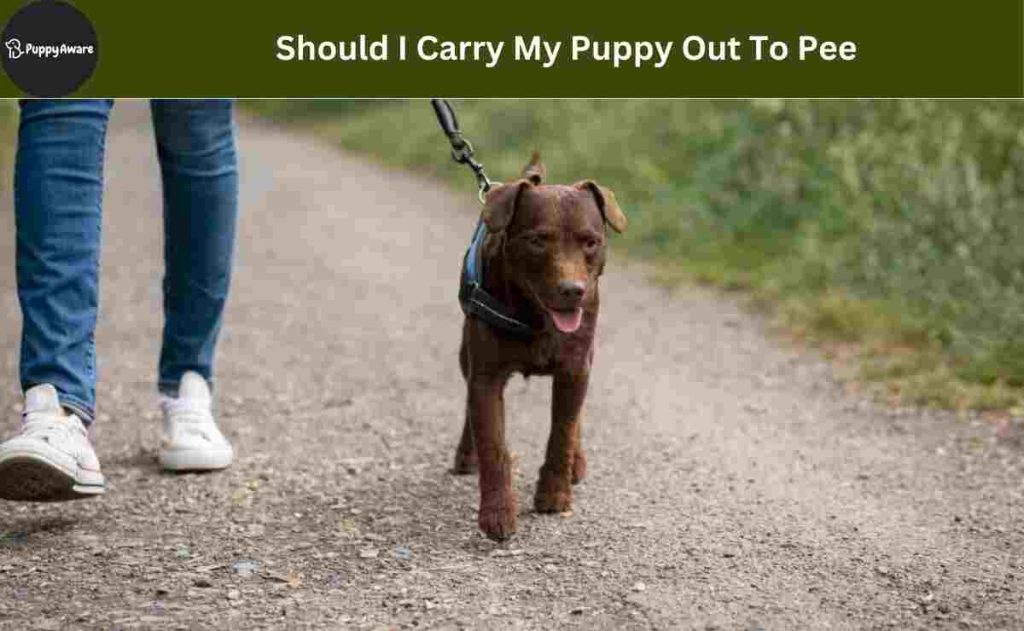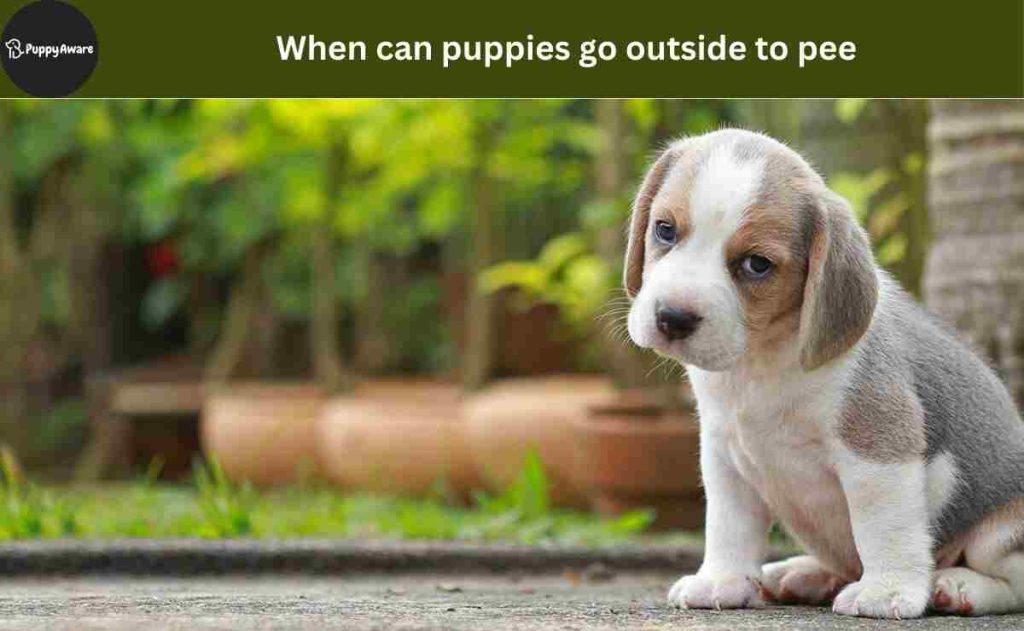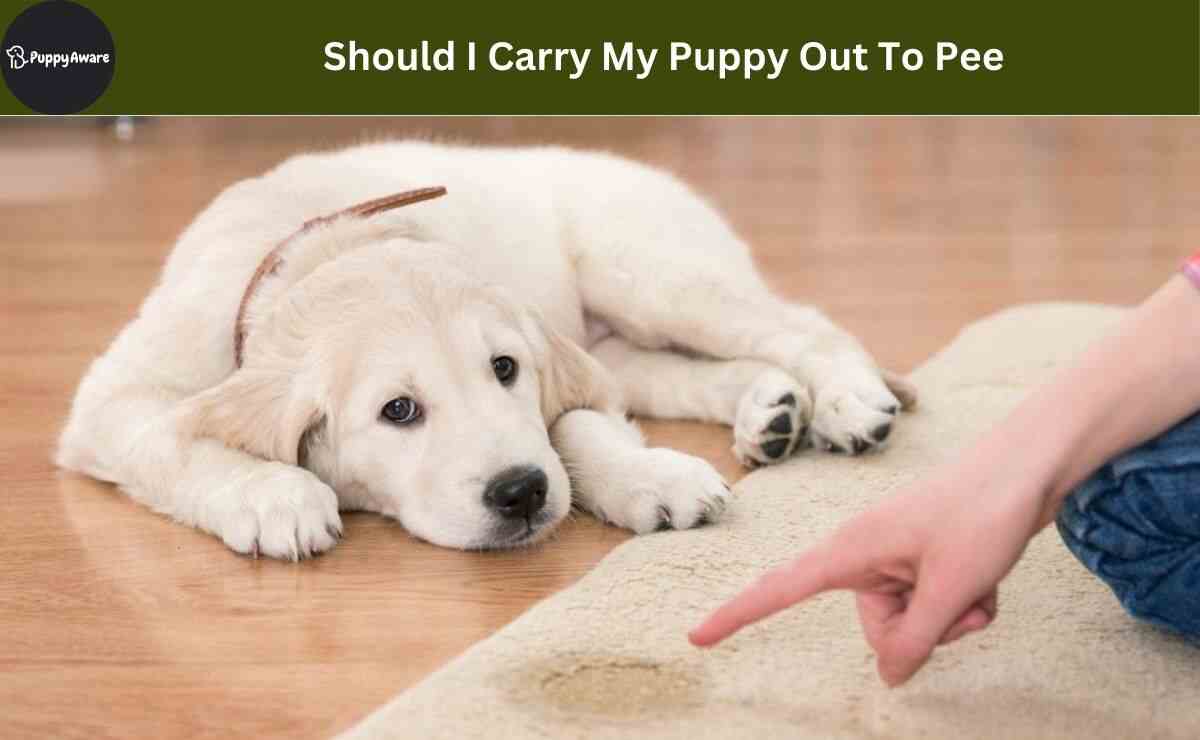At the beginning of potty training, many want to know: should I carry my puppy out to pee?
While carrying a puppy may seem like a convenient option, it is generally not recommended. Yet, you can carry it out when your puppy is too young and it is just the beginning of the potty training. If you carry them out too frequently, it can lead to many problems in the training.
Should I Carry My Puppy Out To Pee?

You should train your new puppy to pee outside of the house. We know training takes time and meanwhile, you need to clean up a lot of mess. So you will feel more safe carrying them out.
Well, carrying pets out to pee is a good thing, it is a kind of reinforcement for them. It is okay until a few times. As time goes on, you should stop carrying them out and teach them to go outside on their own accord.
Puppies need to develop their coordination and muscle strength, especially when it comes to navigating outdoor environments. They need to learn how to walk and explore on their own, which includes going outside to relieve themselves.
By carrying a puppy often, you may inadvertently hinder their progress in developing these skills. Also, it can create a reliance on being carried out for outdoor activities, including bathroom breaks.
Instead of carrying your puppy, it is recommended to use positive reinforcement training techniques to teach them to walk on a leash and to properly use designated outdoor areas for potty breaks.
This will not only help them develop their physical abilities but also establish a routine and reinforce desired behaviors.
Remember, patience and consistency are key when training your puppy. With time and proper guidance, they will become capable of going outside to pee independently.
When Can Puppies Go Outside To Pee?

In some situations carrying a puppy to pee at outside is a good idea. For example :
- Beginning Of Potty Training
When starting potty training your puppy, consider carrying them outside initially. This approach serves as a positive introduction to their designated potty area while encouraging them to develop the crucial skill of bladder control.
However, it’s essential to strike a balance, as you don’t want your puppy to get used to being carried all the time, creating a royal expectation.
- On Stairs
Puppies, in particular, shouldn’t tackle stairs until they’re fully grown. As they are not physically developed, going up and down stairs can cause potential hip problems later in life, such as arthritis and hip dysplasia.
In this case, you can carry out your puppy. This might seem challenging, especially for larger breeds. To make this task easier on your back, consider investing in a puppy carrier, shoulder bag, or a similar option.
- Shared Yard
If your yard is shared with other dogs or animals, it’s a good idea to carry your puppy when it’s time for them to relieve themselves. During their early stages, puppies are more susceptible to diseases carried by other animals.
Sniffing around the ground is a common dog behavior, but it can pose risks when your puppy encounters waste from sick animals. While the risk of diseases like canine parvovirus has decreased due to effective vaccines, it’s still worth considering, especially if there are wild animals in your area.
- Nighttime Toilet Breaks
When your puppy wakes up in the middle of the night needing to go, it’s best to carry them outside. Puppies, especially when in sleep, may not want to wait and could have difficulty holding their bladder. To establish a routine, set an alarm based on your pup’s age.
- Strategic Timing for Potty Breaks
Identifying the specific moment is important during the early stages of potty training. Watch for cues like circling, scratching, staring, or sniffing, signaling your puppy’s need to go.
Moreover, make it a routine to carry them outside right after waking up in the morning and during nighttime potty breaks, adjusted according to their age (approximately every hour for each month of age).
These specific times align with when your puppy is likely most eager to use the toilet, fostering a positive association with the designated outdoor area.
When To Stop Carrying Your Puppy Outside To Pee
It depends on your puppy’s development and the initiation of potty training. Generally, you can ease off this practice when you observe that your puppy can hold their bladder for an adequate duration, which naturally comes with age.
Also, when your puppy is trained enough and stops having accidents indoors, you can stop carrying out. If you begin potty training around 12 to 14 weeks of age, most puppies grasp the idea within a week.
Nonetheless, it’s advisable to continue carrying them for an additional 3 to 4 weeks to ensure consistency and reinforce good habits.
How To Start Potty Training For Your Puppy?
Potty training your puppy can be a challenging but necessary task. It’s important to establish good habits early on to prevent accidents and ensure a clean and healthy environment for your pet. Here are some tips to help make the potty training process as smooth as possible.
1. Start early: Begin potty training as soon as you bring your puppy home. The younger they are, the easier it will be to establish routines and habits. They will easily pick up the routine and relive themselves in a specific area.
2. Create a designated potty area: Choose a specific spot outside where you want your puppy to go potty. Take them to this spot consistently, and praise them when they are eliminated in the right place.
3. Establish a routine: Dogs thrive on routine, so try to take your puppy outside to their potty area at regular intervals throughout the day. This can be after meals, naps, and playtime.
4. Use positive reinforcement: When your puppy successfully goes potty outside, reward them with treats, praise, and affection. This will help them associate going outside with positive experiences.
5. Supervise and confine: When you can’t directly supervise your puppy, confine them to a small area or crate to prevent accidents. Gradually increase their freedom as they become more reliable with their potty habits.
6. Recognize signs of needing to go: Watch for signs that your puppy needs to go potty, such as sniffing the ground, circling, or restlessness. Take them outside immediately if you notice these behaviors.
7. Clean accidents thoroughly: If accidents happen indoors, clean them with an enzymatic cleaner to remove the scent and discourage repeat accidents in the same spot.
8. Be patient and consistent: Potty training takes time and patience. Consistency is key, so stick to the routine and remain calm and positive throughout the process.
How Long Should You Wait Outside For Your Puppy To Pee?
When waiting for your puppy to pee, it is good to wait for 10-15 minutes for the process. For older dogs, a shorter wait of 5-10 minutes is usually sufficient. Puppies, in particular, have small bladders, and they may not empty them in one go due to distractions.
Tips:
- Ensure your puppy is on a leash when you take them out to the potty spot. Use a command like “go potty” to signal the purpose of the outing.
- While waiting, maintain a calm and uneventful atmosphere. Avoid turning it into playtime, as you want your puppy to focus on the task at hand.
- Once your puppy finishes, stay in the potty area for an additional 10 minutes. This provides them with another opportunity to relieve themselves. More often than not, they will take advantage of the second chance.
Conclusion
Carrying your puppy outside for pee is a wise strategy, especially during their early stages before they fully grasp the concept of going outdoors.
However, carrying your puppy outside is not a forever solution. For positive reinforcement, regular praise, a designated spot, and a consistent schedule are necessary during the transition period.
Every puppy is different, and potty training timelines can vary. Some puppies may catch on quickly, while others may take several weeks or even months to fully understand the concept.
